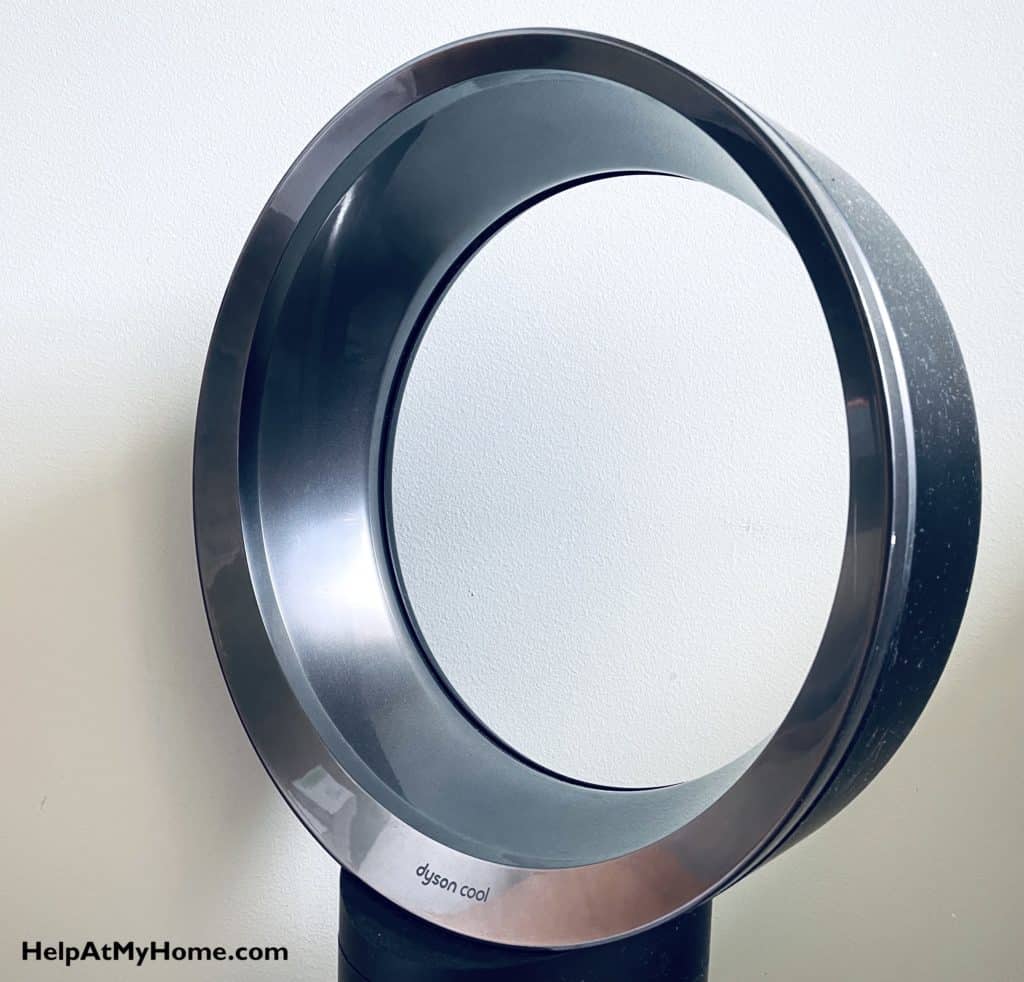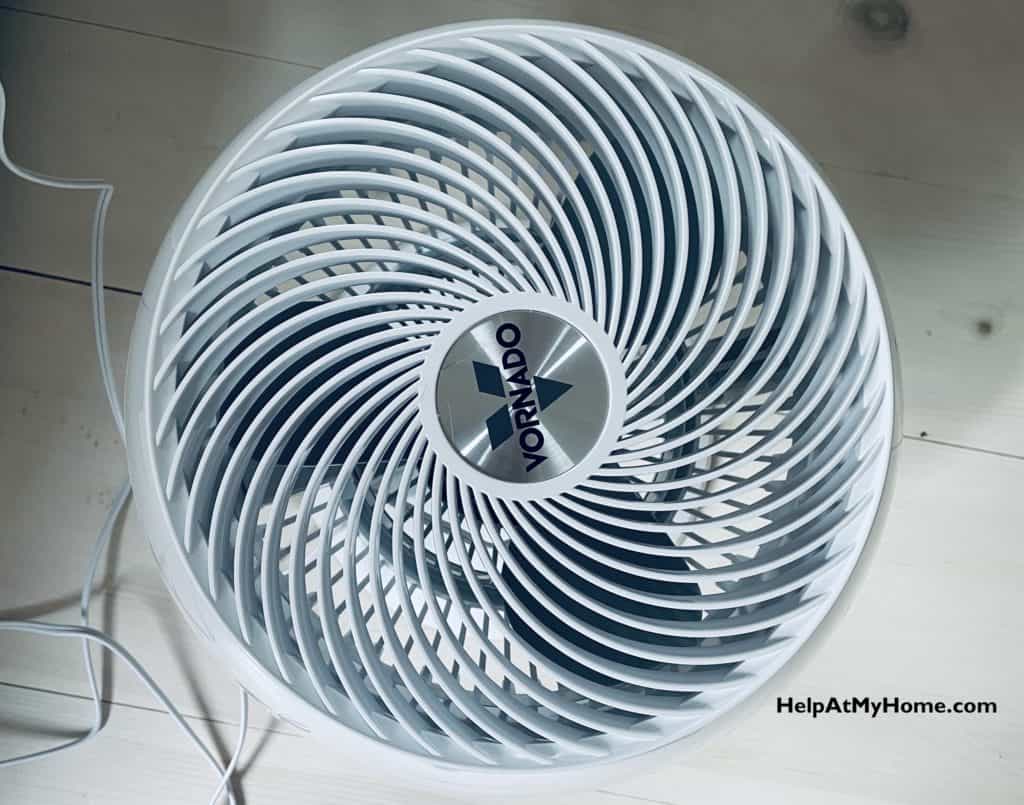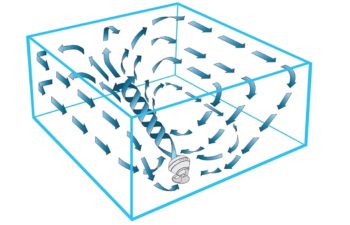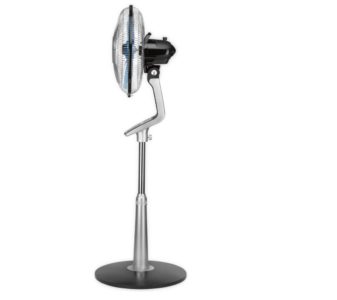My household is crazy about air circulation. Growing up in an AC-free home meant we used fans — ceiling fans, desktop fans, box fans, garage fans, you name it — in order to stay cool during the summer. Over time I grew to appreciate fans and to outfit my own home with any number of them.
Also, as many of us know, sleeping with a fan is simply the best. But if you are a light sleeper, you may want a quiet fan. So what’s the best choice if you want a fan that’s also quiet?
The Rules of Cooling Fans
When it comes to moving air you’ll want to keep these “rules” in mind:
- More Air Movement = You feel cooler (at a given ambient temperature)
- Volume of Air Moved = Fan Size x Fan Speed
- Smaller diameter fans require higher fan speeds to move the same about of air
- Higher fan speeds creates more noise
- Fans cool people, not the room
So what can we take away from these rules?
- Large fans can move more slowly and still provide the same amount of cooling. This is why a 60″ ceiling fan can spin slowly but cool a room
- Small fans require high RPMs and create a lot of noise in order to cool sufficiently
- Look for a fan with a lot of speeds. If the fan only has Low, Medium, High, it’s very unlikely that the Low setting will be slow enough to be silent.
Note: Fan power and other types of air movement are measured in CFM, or cubic feet per minute. This isn’t really useful for our purposes except for comparison from one fan to the next.
If you want a quiet fan, a ceiling fan is always going to be the best option because it’s the largest, moves the most slowly, and can operate silently. They are hard to install and don’t work in all rooms though, so you can find the best alternatives below.

Dyson Cool Fans
Dyson fans are love-em-or-hate-em thanks to their high price and modern design. That said, they are actually good air movers and operate more quietly than just about any fan on the market. A Dyson desktop fan (for years I have owned multiple AM06 10-inch models) are essentially silent at speed levels 1 and 2 (out of 10) and move enough air in order to do some slight cooling as well as keep room air circulating.
Dyson fans aren’t cheap and their ultra-modern aesthetic doesn’t fit in many homes, so they are an immediate “no” for most people. That’s a completely reasonable reaction, and I won’t try to sell anyone on them. That said, they do work well, especially a low speeds. These aren’t good fans for full-room circulation, even the tower Dysons aren’t that good for this (like the TP02 Pure Cool Link). Dyson fans just don’t move the volume of air (in a CFM sense)
Dyson fans are very good at quiet, localized cooling, such as when you are asleep in bed or sitting at desk working.
One thing to remember is that all Dyson fans include a remote control. This feature is probably worth a good $30-50 on most fans and it’s going to be an important addition for anyone who is using the fan for quiet sleeping or desk work. Dyson fans also all have a timer, which is a major feature for sleeping.
Vornado Circulator Fans
I’ve owned a number of US-made Vornado fans, and they are quite good. You definitely pay a price premium for them, but it’s nothing compared to Dyson and the fans are built to last. The circulator fans are design to sit in a room, likely in an out-of-the-way corner, and to run continuously, creating a slight breeze in the entire room. To do this you need a big fan and a lot of power, especially in anything past a modest-sized room.
My recommendation is the Vornado 660 Large Circulator fan, thanks to its size, power, and dependability. It’s a bit big for most rooms, but it gets the job done extremely well and the price increase of the medium 630 isn’t much. So buy it once, and be done with it.
I’ve had my eye on the newer Vornado 610DC, thanks to two main things: lower energy usage and infinite adjustability. It’s the equivalent of a Vornado 630 medium size fan, but it’s white, a good deal more expensive, and has an ugly “Energy Savings” badge on the front. That said, a more adjustable fan than settings 1 through 10 is a dream, and since these fans are designs to be running all the time the energy savings seems like a good idea.
The thing to note about Vornado fans is that most only have three or four settings, which is one reason the 610DC is such a great step forward. The problem with three settings is that the lowest level, isn’t that low. This means Vornado fans are generally quiet given the amount of air they move, not whisper silent, which is what you might be looking for.
Vornado fans do not have a remote control until you pass about the $150 mark. You can look for the 6303DC Energy Smart Medium Air Circulator if this is a critical feature for you.
Interesting in learning more about Vornado? Read out guide to the quietest Vornado fans.
Rowenta Turbo Silence Fans
One series of fans that I have at the top of my to-buy list are the Rowenta Turbo Silence fans, specifically the Rowenta VU5670 Oscillating Fan (or the slightly more affordable Rowenta VU5550). This is a standing fan with a 5-speed design and a remote control. Why consider a $100+ standing fan when I have Dysons?
The thing about Rowenta fans is that they are designed with quiet in mind. Also standing fans are more versatile than desktop fans as they don’t require previous counter-top or dresser-top space. They can easily be aimed up or down while a Dyson can only be aimed down a scant 10 degrees.
Rowenta fans are known for their quiet operation, which is critical. Their fans do have downsides though. While they do have remotes, only newer and more expensive Rowentas have timer. Also the blades cannot be cleaned — a common problem with fans and a major advantage of the Dyson. Also, the Rowenta fans aren’t cheap with most models over $100 and all over $80.
Most Recommended Quiet Fan List
After doing my own research and purchases, I’ve found out that the top recommended fans by experts and customer reviews online. Note the fan name and then the approximate street price…
- Lasko 42″ Oscillating Tower Fan – $62
- Vornado 610DC Energy Smart Medium Air Circulator – $110
- Vornado 630 Mid-Size Whole Room Air Circulator – $65
- Vornado 660 Whole Room Air Circulator – Large – $99
- Vornado 723 Whole Room Air Circulator – Full-Size – $99
- Rowenta VU2660 Turbo Silence Fan, Table Fan – $85
- Rowenta VU5550 Turbo Silence Oscillating Standing Fan – $130
- Rowenta VU5670 Turbo Silence Oscillating Standing Fan – $140
- Honeywell HYF290B Quietset 8-Speed Whole-Room Tower Fan – $70
Borg Fans
As an aside, I wanted to note that another quiet fan that moves a sufficient amount of air is my Borg 16″ oscillating standing fan. This was a Bed Bath and Beyond (or CostCo?) purchase from some years ago and I’ve had a lot of trouble finding a second one for my home. My Borg is an excellent fan and I’ve provided years of quiet operation.
Features To Look For In A Quiet Fan
If you are making the purchase but can’t choose between the quiet fans above, review the features and make sure each has what you need. Important features include:
- Timer – So it can turn off during the night after a few hours)
- Remote – So you can control it from bed or your desk)
- More than 3 speed settings – For the perfect amount of airflow)
- Bladeless design – For safety around kids and pets
- Blade Diameter – Larger means more airflow and quieter operation
What Volume Level Is Quiet Enough?
If you want to know for sure that the fan will be quiet enough for your to sleep beside, then you can look at the volume level in decibels (dB.)
Generally speaking, you’ll want to see that there is at least one setting that is 35 dB or less. This is the level at which we would describe the fan as “whisper quiet” which means it won’t bother you while sleeping, even if it isn’t quite silent.



